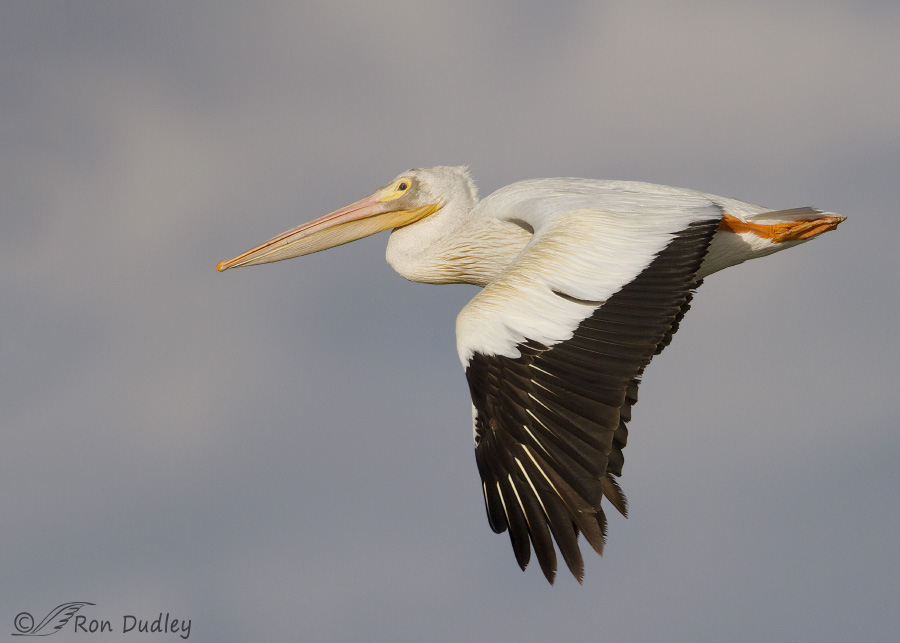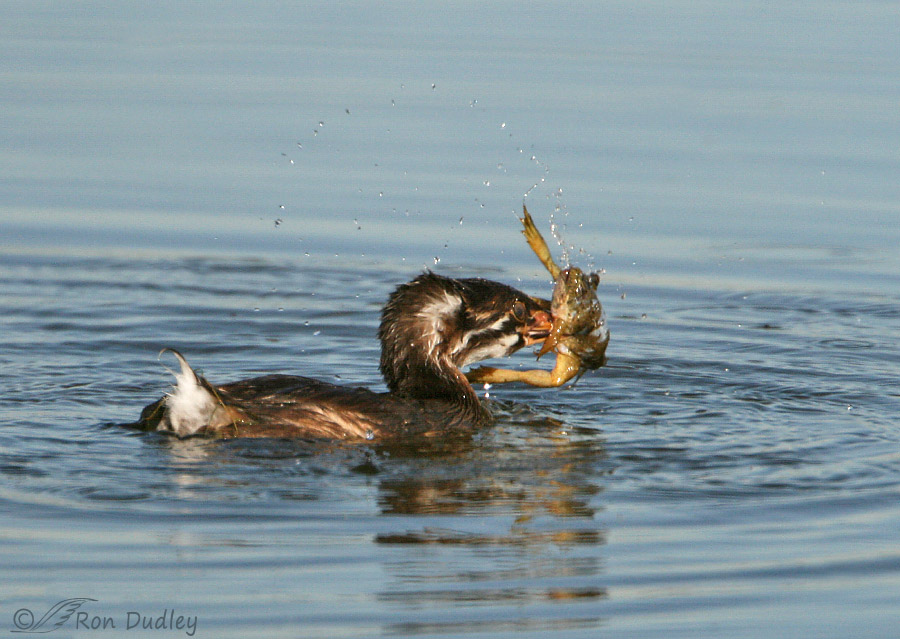Tag: frog
American White Pelicans In Flight (+ 2 bonus images)

American White Pelicans are known for their conspicuous black and white coloration, cooperative foraging techniques and large body size. But what I enjoy most about them is the contrast between the goofy, almost comical proportions of their huge bill and pouch and their graceful, choreographed flight patterns when flying in flocks.
A Pied-billed Grebe Attempts To Dismember A Frog
Pied-billed Grebes are opportunistic feeders, taking large crustaceans (especially crayfish), fish, insects and other invertebrates. They also consume a lot of frogs when they’re available. When the prey is too large to swallow whole (frogs and crayfish especially) they grasp the appendages with their beak and shake it vigorously until the limbs break off. I’ve also seen adults tear off bits of the body trunk of frogs to feed to their chicks. This bird is a juvenile, still learning the finer points of consuming prey. This stage of plumage development is referred to as the “stripe-head stage”, for obvious reasons. Adults lose those stripes. The frog it has captured is probably one of the first amphibians the bird has had to deal with without assistance from a parent and that inexperience seemed obvious as the young bird dealt with the frog. I’ve presented all the photos in this series in the order they were taken. As you can see, the young frog hasn’t yet fully metamorphosed into an adult and retains the tadpole tail. The grebe would repeatedly grasp a limb (it tried all 5 of them several times)… and then shake the frog violently in an apparent attempt to tear the appendage off like it has seen its parents do so many times before. Here it’s working on the left front leg. Other times the bird would grasp the body and shake. Hard! At times the grebe would appear to rest and “think” about its…
Pied-billed Grebe Feeding Behaviors
Pied-billed Grebes are fascinating little birds with a chip on their shoulders. They are pugnacious, full of personality and quite small. They don’t seem to get a lot of attention from bird photographers, possibly because of their generally drab colors and because they’re so common. I really enjoy watching and photographing their behaviors. I’ve stated here before that “behavior” is a major focus of this blog and if I have images of interesting behaviors that are less than perfect technically I will still post them if they illustrate the behavior well. There are several in that category in this post. Grebe with young carp Carp are the primary food for these birds in many of the ponds I frequent. Even young fish can make a huge mouthful for these very small grebes. Swallowing a carp I’ve seen it take several minutes for a grebe to finally work one of these huge (for them) fish down their throats. And I’ve yet to see one give up on the meal because it’s too big. A slippery meal Fish are slimy and slippery and sometimes get away from the grebe temporarily, though they always seem to be recaptured. A potential thief in the background These birds are very social so there’s nearly always other grebes close by when one catches a meal and some of them will invariably try to steal the prize from its rightful owner. This can make for some very interesting but challenging encounters for the photographer because the action is usually so…


